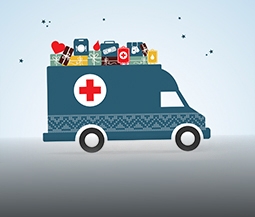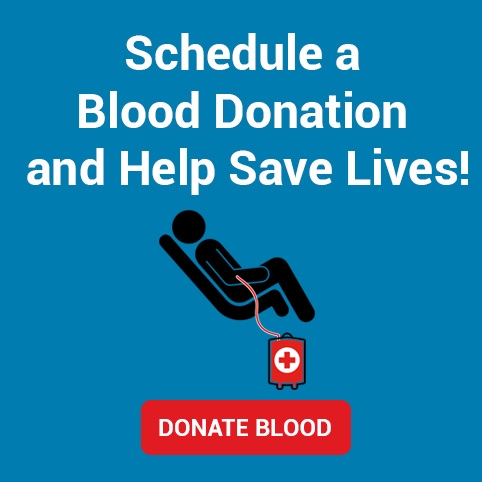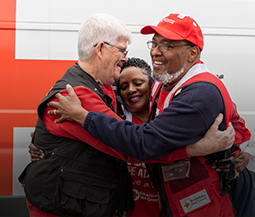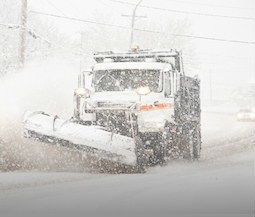Atlanta, October 12, 2018 — On October 10, Hurricane Michael made a Category 4 landfall as the third-strongest hurricane in U.S. history, causing untold devastation along the Gulf Coast..
“Our thoughts are with everyone impacted by this incredibly powerful storm,” said Mark Bedingfield, Interim CEO for the Red Cross Georgia Region, “We’re still working to understand the level of destruction, and we know that getting help into some of these areas will be challenging. Right now, our immediate focus is on making sure people have a safe place to stay.”
Thursday night, almost 2,900 people stayed in as many as 37 Red Cross and community evacuation centers across Florida, Georgia and Alabama. The Red Cross has mobilized more than 1,000 trained disaster workers to support relief efforts across three states and has already served 30,000 snacks. The Red Cross is working with partners to start serving tens of thousands of hot meals each day.
Shelter information
Georgia residents can find open shelters by calling 1-800-RedCross (1-800-733-2767), visiting redcross.org or by downloading the free Red Cross Emergency App available in app stores (search for the American Red Cross) or going to redcross.org/apps
Currently, the following Red Cross shelters are open in Georgia:
Thomas County New Covenent Church - 48 Patterson Still Spur, Thomasville, GA 31757
Doughterty County
Civic Center - 100 W. Oglethrope Blvd, Albany, GA 31701
Decatur County
Jones-Wheat Elementary School - 1401 E. Shotwell St., Bainbridge, GA 39819
IMPORTANT SAFETY INFORMATION
Returning Home Safely
· If you had to leave your home, return only when local authorities advise that it is safe to do so. Do not cut or walk past colored tape that was placed over doors or windows to mark damaged areas unless you have been told that it is safe to do so. If a building inspector has placed a color-coded sign on the home, do not enter it until you get more information, advice and instructions from your local authorities.
· If you have children, leave them with a relative or friend while you conduct your first inspection of your home after the disaster. The site may be unsafe for children, and seeing the damage firsthand may upset them even more and cause long-term effects, including nightmares.
· Do not enter a building until it has been inspected for damage to the electrical system, gas lines, septic systems, and water lines or wells. Wear appropriate protective equipment such as gloves, safety glasses, rubber boots, and masks to protect you from debris and airborne particles, e.g., mold and dust.
· Follow these tips for inspecting your home’s structure and utilities & systems after a hurricane.
· Take pictures of home damage, both of the buildings and its contents, for insurance purposes.
· Do not use electrical equipment if it is wet or if you are standing in water.
· Stay out of any building that has water around it.
· Keep away from loose or dangling power lines. Report them immediately to the power company.
Michael has left hundreds of thousands of people without power and it could be awhile until power is restored.
During a Power Outage
· Use flashlights in the dark, not candles due to extreme fire risk.
· Eliminate unnecessary travel, especially by car. Traffic lights will be out and roads will be congested.
· If you are using a generator be sure you understand the risks of carbon monoxide poisoning and how to use generators safely.
HOW YOU CAN HELP The Red Cross depends on financial donations to be able to provide disaster relief immediately. Help people affected by storms and countless other crises by visiting redcross.org, calling 1- 800-RED CROSS or texting the word MICHAEL to 90999 to make a $10 donation. Donations enable the Red Cross to prepare for, respond to and help people recover from disasters.
PLEASE GIVE BLOOD Severe weather events like Michael often force the cancellation of blood drives and decrease donor turnout in affected areas. To meet the needs in these impacted areas and throughout the country, the Red Cross asks individuals to give blood. Appointments can be made by using the Red Cross Blood Donor App, visiting redcrossblood.org or calling 1-800-RED CROSS (1-800-733-2767).
The Red Cross needs to collect more than 13,000 blood donations and 2,500 platelets every day to meet patient needs across the country. Blood can take up to three days to be tested, processed and made available for patients, so even a few days of disruption can impact patient care.
About the American Red Cross:
The American Red Cross shelters, feeds and provides emotional support to victims of disasters; supplies about 40 percent of the nation's blood; teaches skills that save lives; provides international humanitarian aid; and supports military members and their families. The Red Cross is a not-for-profit organization that depends on volunteers and the generosity of the American public to perform its mission. For more information, please visit redcross.org or cruzrojaamericana.org, or visit us on Twitter at @RedCross.








